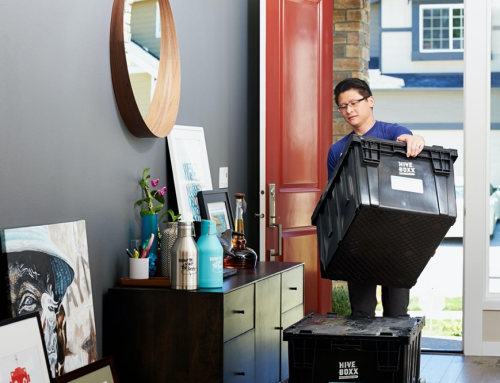When we have a secure attachment style we have a basic trust in others and we are able to set good boundaries for ourselves. We believe our partners are there for us and we do not have a problem being there for them.
Avoidant attachment
Some of us grew up with shaky attachments to our parents or primary relationships. One of these insecure attachment styles is avoidant. With an avoidant attachment style, our parents were not consistently there for us physically or emotionally. They frightened us or made us feel rejected. Because of their behavior, we learned to auto-regulate and focus on self-reliance.
Anxious or ambivalent attachment
Today, I want to talk about another insecure attachment style. It is the anxious attachment style. It is often called ambivalent attachment, so don’t get confused if you see it elsewhere labeled as such.
Those of us who have an anxious attachment style, grew up with parents or family members who were there for us inconsistently. They provided care and emotional attunement sometimes. Other times they were absent, preoccupied, overwhelmed, addicted, etc.
This kind of intermittent attention is not healthy. It causes us to constantly seek attention, but also brace ourselves for disappointment. We simultaneously want love and affection but also know we can’t really have it. Imagine a gambler at a slot machine pouring money into the machine, hoping for a win, but knowing it might not happen.
People pleasers and drama queens
The anxiously attached person tries to please the parent or significant other so the love and affection will be consistent. We adapt to our parent’s needs and moods or we try to manipulate our parent into doing what we want. For example, we may try to get perfect grades to please our achievement focused parent. We may also stage a lot of dramatic emotional outpourings to guilt our parents into paying attention to us.
Can’t relax in a relationship
According to somatic attachment and trauma expert, Diane Poole Heller, an anxious or ambivalently attached person never gets enough love. They can’t relax in an adult relationship. There is always the chance the affection will go away. They do not know how to soothe themselves (as an avoidantly attached person does).
They often prematurely look for signs of disconnection and abandonment in their relationships. As a personal example, in the past, I’ve noticed myself over-analyzing the wording and number of texts a partner sends me. I looked for and often found, small nuances that convinced me something was wrong. I let those primarily innocuous nuances get my radar primed for other concerns between us. If a partner got defensive or annoyed with my questioning, that proved my theory that something was wrong.
We can become securely attached
Fortunately, Dr. Poole Heller says it is possible to recover the secure attachment code that is in all of us. To do this we need to experience secure relationships later in our lives — they can be with a therapist, friend, lover, spouse, etc.
How to heal anxious attachment wounds
To heal the anxious insecure attachment, we need to re-establish a feeling of consistent connection. As you can imagine, this takes time and lots of reassurance. It is almost inevitable a love partner will let us down. No one is perfect. This let down, reaffirms the anxiously attached person’s biggest fears and starts the cycle over again.
If a partner can handle our emotional reactions to feeling abandoned and maintain a mostly consistent pattern of care, there is hope for us, the anxious people, to gain trust and security.
Change our identity
Even when love is present, anxiously attached people often subconsciously deflect it or pull away from it, believing it is not possible to have. We have based our personal identity on wanting long-term intimacy but not getting it. To heal ourselves we have to change our ingrained identity.
Dr. Poole Heller suggests showing clients when and how their partners give them love. She uses “The Five Love Languages” to demonstrate the different ways love can be expressed. The more they notice when they receive attention and the longer they can tolerate receiving it, without questioning or dismissing, the more secure they become.
Reconnect with ourselves
One final important thing to work on to gain security as an anxiously attached person, is to maintain a connection to ourselves. Our hyper-awareness of the other person’s emotions and needs (sound familiar HSPs and empaths?), causes us to disconnect from ourselves. This disconnection from self drains us and leaves us extra vulnerable in relationships. We don’t have a self, identity or integrity to draw from for security and nourishing interdependence. We completely depend on someone else to make us feel OK.
We can reconnect with ourselves through meditation, yoga, naming our emotions as they arise, working with a therapist or coach who helps us see ourselves and ultimately, by staying attuned to our feelings and needs when in the presence of others.
This is what security looks like
Our insecure attachment styles need not be permanent. A secure partner helps us move toward the secure end of the attachment spectrum by not leaving and not reacting strongly to our fears and distancing. We can regain trust and rediscover our own boundaries by experiencing consistent care, noticing the love we receive, building tolerance for receiving it and reconnecting with ourselves.
Are you or someone you know anxiously attached? What makes you feel secure? Do you have any secure relationships in your life?
Photo by Tiago Bandeira on Unsplash
Photo by Ian Espinosa on Unsplash







Well … a lot there, Brenda. I think I fall into the anxiously avoidant category! lol …
Much of it, for me, is I guess ‘learned behavior.’ I’ve learned that being who I really am, doesn’t work for most people.
i.e., I’m more open than anyone I know about who I am. What I feel. What I’ve done, not done. Where I’ve failed, succeeded. Who I’ve loved, still love. Unless someone is equally open, within themselves, about those things, they get mightily uncomfortable with someone else who is those things.
We are not finished projects. We may be stalled in our growth. We may quit exploring who we are — it’s not safe to do so. But we’re not finished — unless we choose to stop exploring, wondering, reading, asking questions.
Who we meet and come to know at first, is much more than what we see. Just as we are much more than someone initially sees. If someone basically IS this ‘at first glance’ person we see, and there’s not more there? Well, if you’re comfortable with that, then go for it. If you know that YOU are ever changing and growing … then that’s a bad fit.
Sometimes I think it ends up that we wander and wonder alone. If we’re lucky, perhaps, we find someone who loves that we do wonder and wander, that we’re not a finished project, that who we are today, will shift in the future. Perhaps in big ways. And we love that person for all of who he or she is, and will become — without knowing who this person we love will become. We WANT him or her to change, because that is who we are. It doesn’t at all mean that we have to ‘go our separate ways.’ It means, I think, that we know that, as we ourselves will change, so, too, will the one we love. And we welcome it. Encourage it. Support it. Encourage them to explore parts of themselves that they haven’t explored to date.
We like things fixed, I think. “You are this way. Don’t change.” Okay. All the while, there is a relentless urge and need to grow. Life is growth. Not stagnation. But most of us seem to want someone to stay the same — so we can ‘rely’ on this person. To NOT change.
Interesting stuff, always! lol …
Keep rocking us with your writing, your words, your mind and your heart, Brenda! You are always welcome in my world!
Michael
I have been on both sides of the change/please don’t change fence. As I matured, I realized we all change. It’s growing together as we change that isn’t always easy. I like that you are straight up about who you are. Did you always know who you are, or did that come with experience? I know some people who have owned their personalities from an early age and others who never really knew themselves. Some are definitely more willing to dig deeper into their self-awareness.
Thanks for your contribution Michael!